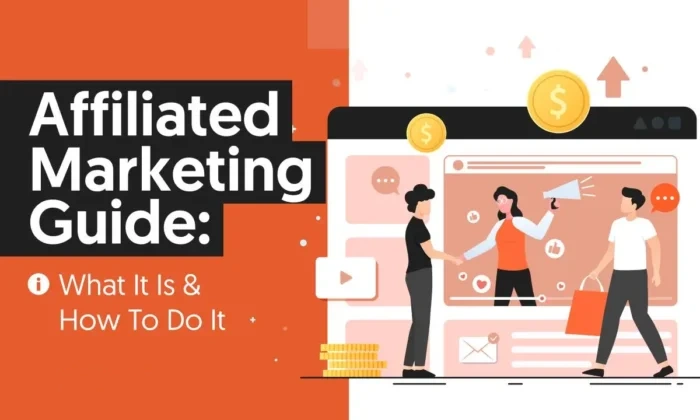Imagine you're launching a limited-time offer for your products. You know that urgency can make a significant difference, but how do you really convey that to your customers? Enter countdown timers! In this blog post, I'll walk you through my experience with the DigiTimer app, a tool that not only promises but delivers on boosting conversions and making your emails stand out. I'll share my hands-on journey through its features, customization options, and even a few personal tips on making the most of countdown timers in your marketing strategy. Trust me, using these can make your promotions feel like unmissable events.
The Power of Urgency in Marketing
Have you ever felt that little nudge to buy something because it was “now or never”? That’s the magic of urgency in marketing. It’s not just a tactic; it’s a powerful psychological trigger that can drive consumer behavior. Let’s dive into why urgency works, the psychology behind it, and some real-life examples that showcase its effectiveness.
Why Urgency Works in Email Marketing
Urgency creates a sense of immediacy. When we see a countdown timer or a limited-time offer, we feel compelled to act quickly. Why? Because we don’t want to miss out. It’s a classic case of FOMO—Fear of Missing Out. This is particularly effective in email marketing. When you send an email with a time-sensitive offer, you’re not just sharing a deal; you’re encouraging immediate action.
Immediate Action: Urgency pushes consumers to make decisions faster.
Perceived Value: Limited-time offers often feel more valuable. When something is scarce, it seems more desirable.
Psychological Factors That Drive Consumer Behavior
Understanding the psychology behind urgency can help us craft better marketing strategies. Here are a few key factors:
Scarcity: When people perceive that an item is in limited supply, they want it more. Think of it as a race; the fewer items available, the more competitive it feels.
Time Pressure: Deadlines create pressure. When consumers know they have a limited time to act, they’re more likely to make a purchase.
Social Proof: Seeing others act quickly can influence our decisions. If everyone else is buying, we feel the urge to join in.
As
“Creating a sense of urgency is one of the most effective ways to motivate your audience to take action.”
This quote perfectly encapsulates the essence of urgency in marketing.
Real-Life Examples of Successful Campaigns Using Timers
Now, let’s look at some real-life examples that illustrate how urgency can boost conversions:
Flash Sales: Retailers like Amazon often run flash sales with countdown timers. These sales create a buzz and encourage shoppers to buy before time runs out.
Event Registrations: Companies often use timers for event registrations. For instance, a webinar might have a countdown to registration closing, prompting users to sign up immediately.
Limited Stock Notifications: E-commerce sites frequently display messages like “Only 3 left in stock!” This not only creates urgency but also encourages consumers to act quickly.
Incorporating countdown timers into your marketing strategy can significantly enhance your campaigns. They tap into our psychological triggers, making us more likely to take action. So, the next time you craft an email or a landing page, consider how urgency can play a role in your messaging.
By understanding these elements, we can harness the power of urgency to drive consumer behavior and ultimately boost our sales. It’s a simple yet effective strategy that can make a world of difference in our marketing efforts.
Navigating DigiTimer: A User's Journey
Overview of the DigiTimer Dashboard
When I first logged into DigiTimer, I was struck by the clean and user-friendly dashboard. It was welcoming and straightforward, which is a big plus for anyone new to the app. The dashboard initially displayed no timers, but that quickly changed as I dove into the features. I found the "Create Timer" button right away, and it opened up a world of possibilities.
The dashboard is designed to keep everything organized. You can easily see all the timers you've created, along with important stats like views and clicks. This makes managing your timers a breeze. It’s like having a personal assistant for your countdowns!
Step-by-Step Guide to Creating a Countdown Timer
Creating a countdown timer is where the fun begins. Here’s how I did it:
Click on "Create Timer": This takes you to a new page filled with options.
Select Timer Type: You have choices like Standard mode, Evergreen mode, and dynamic options. I chose the Standard mode for a specific expiration date.
Set the Date and Time: I picked Friday, the 26th at 1 PM, and adjusted the timezone to London.
Customize the Display: Here’s where the magic happens! You can choose to show days, hours, minutes, and seconds.
It’s really that simple! I was amazed at how quickly I could set everything up. The interface is simple enough for anyone to use, yet powerful enough to deliver impressive results.
Customization Options Available and Their Implications
Customization is where DigiTimer truly shines. After setting up my timer, I explored various options:
Counter Tab: Adjust font size and type. I went with "Red Rose" for a touch of elegance.
Label Customization: You can change the text and size for days, hours, minutes, and seconds. Plus, you can assign colors to each label!
Container and Positions: Choose a background color or even upload a custom image. This is a game-changer for branding.
Advanced Settings: Decide what happens when the timer expires. You can show a message, hide the timer, or reset it. I found this feature particularly useful for crafting custom messages.
Each customization option has implications for how your timer looks and functions. It’s not just about aesthetics; it’s about creating a timer that resonates with your audience.
Once I was satisfied with my timer, I could save and publish it or send a test email to check functionality. The test feature allows you to enter up to three email addresses for real-time testing before finalizing your timer. This gave me peace of mind.
Overall, my journey with DigiTimer has been incredibly positive. The dashboard is intuitive, the countdown creation process is straightforward, and the customization options are extensive. I can't wait to see how my timers perform!
Customization: Making Your Timer Stand Out
When it comes to creating effective countdown timers, customization is key. A well-designed timer can grab attention and boost engagement. So, how do we make our timers stand out? Let’s dive into the world of fonts, colors, and styles.
Exploring Fonts, Colors, and Styles
First off, let’s talk about fonts. The right font can convey your brand’s personality. For instance, a playful font might suit a children’s product, while a sleek, modern font could be perfect for tech gadgets. Have you ever noticed how certain fonts can evoke specific feelings? It’s true!
Next, we have colors. Colors aren’t just pretty; they have meanings and can influence emotions. For example, blue often represents trust, while red can evoke urgency. When customizing your timer, think about your brand’s identity. Are your colors aligned? If not, you might lose potential clicks. Remember, “A well-customized timer not only fits your brand identity but also attracts more clicks.”
Finally, let’s not forget about styles. Rounded corners can make your timer look friendly, while sharp edges might give it a more professional feel. Think about what message you want to send with your timer’s design.
Utilizing Templates for Eye-Catching Designs
Now, if you’re not a design whiz, don’t worry! Many apps, like DigiTimer, offer templates that are visually appealing and easy to customize. You can choose a template that resonates with your audience and then tweak it to fit your needs. This can save you time while still allowing for a unique touch.
For example, I once came across a user who transformed a basic template into a stunning countdown timer for a holiday sale. They changed the colors to match their branding and used a festive font. The result? A timer that not only looked great but also drove significant traffic to their site.
Examples of Effective Customization from Other Users
Seeing how others customize their timers can be incredibly inspiring. I’ve seen users incorporate animations, unique backgrounds, and even personalized messages that resonate with their audience. One user created a timer that counted down to a product launch, using a vibrant color scheme and a bold font that matched their product’s packaging. The engagement they received was off the charts!
As you explore your customization options, keep in mind the minimum and maximum effects of your choices. Too much customization can overwhelm your audience, while too little can make your timer blend in with the crowd. Striking the right balance is essential.
In conclusion, customizing your timer is not just about aesthetics; it’s about aligning with your brand and enhancing visibility. So, what will your timer look like? Let your creativity flow!
Best Practices for Using Countdown Timers Effectively
Countdown timers can be a game changer in marketing. They create urgency and encourage immediate action. But to truly harness their power, we need to use them wisely. Here are some best practices that can help you maximize their effectiveness.
1. Timing Your Countdown for Promotions
When should you launch your countdown timer? Timing is everything. You want to align your countdown with key promotional events. For example, if you’re running a holiday sale, start the countdown a few days before the event. This builds anticipation.
Think about it: Would you rather see a timer that starts the day before a sale or one that’s been running for a week? The latter might lose its impact. So, aim for a sweet spot that creates excitement without dragging on too long.
2. Integrating Timers Within Email Layouts
Emails are a fantastic place to use countdown timers. They grab attention and can significantly boost click-through rates. But how do you integrate them effectively?
Placement is key: Position your timer prominently within the email. It should be one of the first things your readers see.
Customization matters: Use colors and fonts that match your brand. A well-designed timer can enhance your email's overall look.
Test different formats: As I always say, “Testing different formats and durations can significantly increase engagement rates.” Try different styles to see what resonates best with your audience.
3. Analyzing Performance Metrics Post-Launch
Once your countdown timer is live, it’s crucial to analyze its performance. This is where the magic happens. You can learn what works and what doesn’t.
Use analytics tools to track metrics like:
Click-through rates: How many people clicked on your timer?
Conversion rates: Did the timer lead to more sales?
Engagement: Are people interacting with your emails more when a timer is present?
By reviewing these metrics, you can refine your strategy for future campaigns. Maybe you find that a shorter countdown works better for your audience. Or perhaps a specific color scheme draws more attention. The possibilities are endless.
4. The Importance of A/B Testing
A/B testing is your best friend in this process. It allows you to compare two versions of your countdown timer to see which performs better. You can test different:
Durations
Designs
Placement within emails
By experimenting, you can discover what truly resonates with your audience. Remember, what works for one campaign may not work for another. So, keep testing!
In conclusion, countdown timers can be a powerful tool in your marketing arsenal. By timing your promotions well, integrating them into your emails, and analyzing their performance, you can significantly boost engagement and conversions. So, let’s get started and make those timers work for us!
Feedback and Recommendations: My Thoughts on DigiTimer
Using DigiTimer has been quite an experience for me. Right from the start, I was impressed by its clean interface. It’s user-friendly, which is a big plus. I could easily navigate to the "Create Timer" option. This is where the fun begins. The app offers a variety of customization features that allow you to create eye-catching countdown timers. These timers can significantly enhance sales conversions and click-through rates. But, like any tool, there are areas that could use some improvement.
Personal Takeaways from Using DigiTimer
One of my main takeaways is how DigiTimer has streamlined my marketing efforts. The ability to create different types of timers—like the Standard mode or Evergreen mode—has been a game changer. I can tailor the timer based on when an email is opened, which adds a personal touch for each recipient. However, I can't help but wish for more template options. As I mentioned,
DigiTimer has streamlined my marketing efforts, but I'm looking forward to seeing more template options.
This would allow for even more creativity in my campaigns.
Suggestions for Improvement
While I appreciate the current features, there are a few suggestions I’d like to share:
Expand Template Options: More templates would cater to different marketing styles and themes.
Enhanced Analytics: Providing deeper insights into timer performance could help users optimize their strategies.
Mobile Optimization: Ensuring that timers look great on mobile devices is crucial in today’s digital landscape.
These improvements could elevate the user experience even further. I believe that customer feedback is invaluable in app development. It’s essential for developers to listen to users like us. After all, we are the ones using the product daily.
Highlighting Strengths and Weaknesses
DigiTimer has many strengths. The customization options are extensive, allowing for a high level of creative control. You can adjust fonts, colors, and even the timer's behavior when it expires. However, the lack of templates can be a drawback for those looking for quick solutions. It’s a bit of a double-edged sword. The flexibility is fantastic, but it can also be overwhelming for new users.
Potential for Expansions
Looking ahead, I see great potential for DigiTimer. Expanding its features could attract more users. Perhaps integrating with other marketing tools or platforms would be beneficial. This could create a more seamless experience for users who rely on multiple tools for their marketing efforts.
In conclusion, my experience with DigiTimer has been largely positive. The app is easy to use and offers a range of features that can enhance marketing strategies. However, there’s always room for improvement. By listening to user feedback and expanding its offerings, DigiTimer could become an even more powerful tool in the marketing toolkit. I’m excited to see how it evolves in the future!



